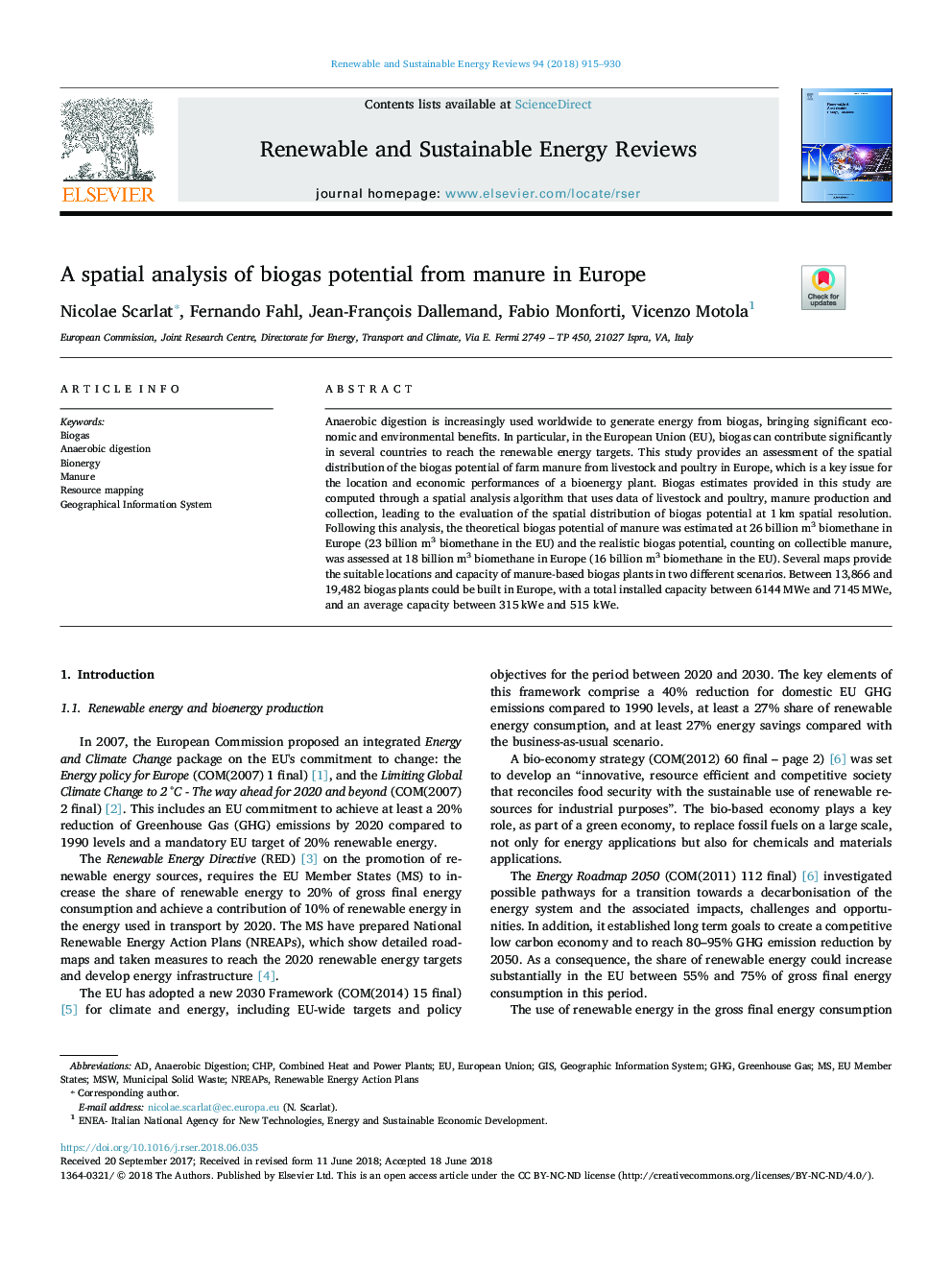| Article ID | Journal | Published Year | Pages | File Type |
|---|---|---|---|---|
| 8110569 | Renewable and Sustainable Energy Reviews | 2018 | 16 Pages |
Abstract
Anaerobic digestion is increasingly used worldwide to generate energy from biogas, bringing significant economic and environmental benefits. In particular, in the European Union (EU), biogas can contribute significantly in several countries to reach the renewable energy targets. This study provides an assessment of the spatial distribution of the biogas potential of farm manure from livestock and poultry in Europe, which is a key issue for the location and economic performances of a bioenergy plant. Biogas estimates provided in this study are computed through a spatial analysis algorithm that uses data of livestock and poultry, manure production and collection, leading to the evaluation of the spatial distribution of biogas potential at 1â¯km spatial resolution. Following this analysis, the theoretical biogas potential of manure was estimated at 26 billion m3 biomethane in Europe (23 billion m3 biomethane in the EU) and the realistic biogas potential, counting on collectible manure, was assessed at 18 billion m3 biomethane in Europe (16 billion m3 biomethane in the EU). Several maps provide the suitable locations and capacity of manure-based biogas plants in two different scenarios. Between 13,866 and 19,482 biogas plants could be built in Europe, with a total installed capacity between 6144â¯MWe and 7145â¯MWe, and an average capacity between 315â¯kWe and 515 kWe.
Keywords
Related Topics
Physical Sciences and Engineering
Energy
Renewable Energy, Sustainability and the Environment
Authors
Nicolae Scarlat, Fernando Fahl, Jean-François Dallemand, Fabio Monforti, Vicenzo Motola,
